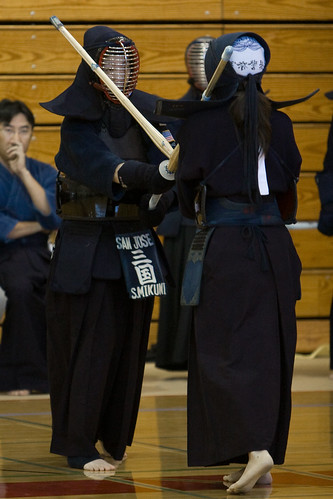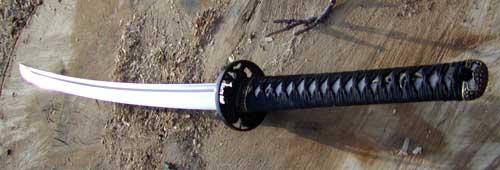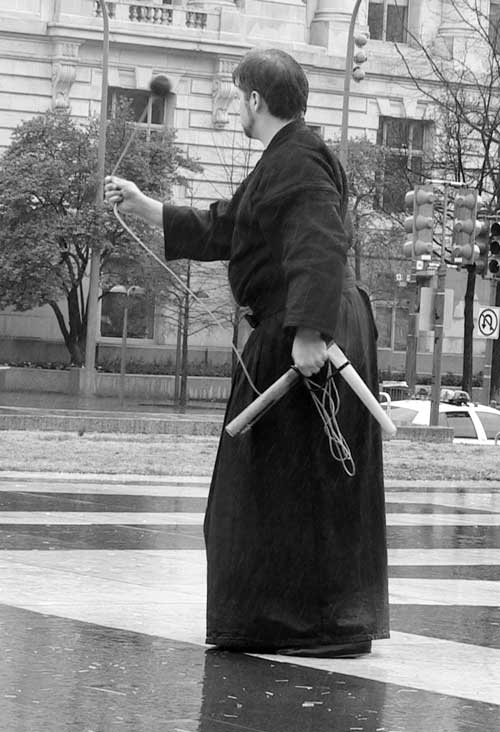Choosing a Martial Art
The previous part of this series discussed why you might want to consider martial arts training. In this part, we investigate the differences between various martial arts, and how to select one for yourself.
A Little Martial Arts History
The history of martial arts goes back thousands of years. It is very difficult to say that a particular martial art came from a particular country, since the different martial arts styles and schools have borrowed techniques and teachings as people moved from place to place across the globe. However, some martial arts are commonly thought of as “Eastern” martial arts, while other martial arts are commonly thought of as “Western” martial arts.
There is also a line of martial arts that some might refer to as “traditional” martial arts. These martial arts were often the ones developed centuries ago to teach warriors how to fight on the battlefield—with weapons and in unarmed combat. Over the centuries, as countries entered into peacetime eras, these traditional arts were sometimes outlawed, sometimes changed, sometimes taken underground. New arts were created which became more sportlike and emphasized less the lethal techniques and more the techniques one would use to score a point during a duel or competition. In some cases, the martial art was distilled into canonical or meditative forms (such as iaido, the art of drawing the Japanese sword by a solo practitioner, cutting through the air, and placing the sword back into its scabbard).
In the Eastern martial arts, for example, kenjutsu is the classical Japanese art of swordsmanship—fighting and training techniques to use with a real sword. The modern sport version is kendo—fighting and training with bamboo swords to score points against the opponent.
The Western martial arts also have this Sport/Traditional split. Olympic Fencing is the sport version of some of the historical Western martial arts. In Olympic fencing, lightweight swords are used in competitions, whereas in historical Western martial arts, a broader collection of weapons and techniques are taught, such as two-handed sword or sword and shield.
Thus, the traditional arts emphasize training and techniques as taught centuries ago for use on the battlefield, unlike the modern sport arts, which are more designed for the competition arena.
There are also some martial arts that are solely geared for lethal self-defense techniques, like for military or police situations. Finally, some martial arts have been molded into forms that are very stylistic, almost dance-like, while others focus on training with ancient weapons that are demonstrated in exhibitions.
A Few of the Many Different Martial Arts
But with all these caveats, just so you can get an idea of the wide variety of martial arts available, here’s a quick, rough, brief, non-comprehensive categorization and sampling of some martial arts and styles. I’ve tried to include representative links to the different arts so that you can get some idea what each style is about.
- Western: Bartitsu, Western Martial Arts, Fencing, Wrestling, Boxing, Archery, Systema, Savate
- Eastern: Karate, Aikido, Kempo, Taekwondo, Kung Fu, Kenjutsu, Tai Chi, <a href="Shindo Muso Ryu
- Modern: Muay Thai, Mixed Martial Arts (MMA), Gracie Jujutsu, Jeet June Do
- Sport: Boxing, Wrestling, Judo, Archery, Savate, Karate, Kendo, Fencing, Sambo
- Traditional: <a href="Shindo Muso Ryu, Tai Chi, Kung Fu
- Self Defense: Krav Maga, Systema, Military Combatives
- Fitness, Acrobatic, Exhibition: Cardio Kickboxing, Modern Wushu
As you can see from just this sampling (there are many more styles available—I just chose a few), there are many arts to choose from and each has a long history, tradition, and emphasis.
Consider Your Body Characteristics and What You are Interested In
But personal interests aside, depending on your body characteristics (long legs, stocky body, quick moves, powerful strikes, or quick reflexes), you may find some martial arts styles “more suited” to your body than others. For example, boxing superstar Manny Pacquiao is a relatively “small” boxer, but has the wrist diameter of a much larger person, so his punches are much stronger and more devestating—he punches above his weight class. So, consider your body characteristics in deciding what art you want to train in. If you have long legs (i.e., have good reach), you may find one of the kicking arts, like Muay Thai or Tae Kwon Do to be enjoyable. If you are a bit stockier (i.e., have more balance), you may be very effective at throwing and grappling arts like Judo and Jujutsu. If you have fast hands and feet, perhaps you might like kung fu styles. If you have more power, you may enjoy a striking art like karate or Muay Thai. Coordinated with lightning-fast reflexes? Try fencing. Finally, you may want to match the martial art you study to your personality. Some arts are more direct and aggressive, whereas other arts are more indirect and defensive.
Women
Martial arts training is especially good for women! Not only will martial arts training get you in shape, but you will learn situational self-awareness, self-defense, and alertness skills that may save your life.
Which arts are better suited for women? Though there are women practicing all styles of martial arts, some women may find arts that de-emphasize strength-against-strength techniques to be more accessible, like Aikido, Wing Chun, or Jujutsu. However, do not feel you need to limit yourself to just those arts because you are a woman. My wife, for example, has a black belt in Taekwondo.
Here are a few links specifically for women in the martial arts:
- Female Martial Artists
- Women in Martial Arts Facebook Group
- National Women’s Martial Arts Federation
Interests
Note, however, that personal effort and interests in general trump body characteristics and gender, so in the end, pick an art that you find enjoyable and are truly interested in. You may not be able to narrow your list of styles that you want to train in down to just one. You may want to learn Kung Fu AND Fencing. Or you may want to learn Muay Thai AND Jujutsu. In that case, which art you train in may be determined by which art is offered in your area. So next in the series is how to choose where to train in your martial art.
This is part 2 of a four-part series on how to get started in martial arts:
- How to Get Started in the Martial Arts, Part 1: Benefits of Martial Arts
- How to Get Started in the Martial Arts, Part 2: Choosing a Martial Art
- How to Get Started in the Martial Arts, Part 3: Choosing a Place to Train
- How to Get Started in the Martial Arts, Part 4: Final Thoughts
Feedback
I hope you enjoyed this post. If so, please consider shopping for yourself using this link to Amazon.com. Thanks!
For those who’ve done martial arts before, what did I miss? For those considering martial arts training, what else would you like to know? Please, send feedback my way— I’d love to hear from you.



